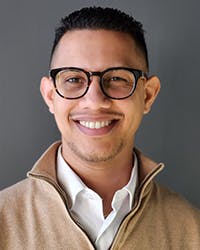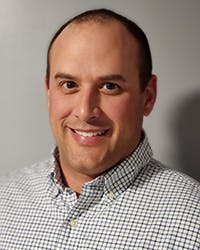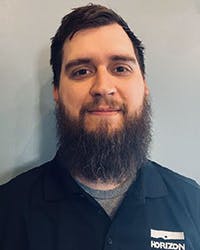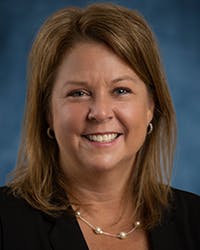Young Network Leaders Spotlight
The REAL Value Prop for BSPs’ Transformation
How can we attract and retain young talent in our industry? Ask these eight young leaders and they’ll give it to you straight. And, from an outsider view, they’re not asking for much. Just the chance to learn from the best and the brightest veterans in the industry, be respected for what they can contribute, and enjoy a better work/life balance.
What’s in the way? You already know.
ISE: What is your greatest contribution to your company and/or the industry to date?
DeJesus, Crown Castle: We often have access to a broad range of technologies, but the technologies alone don’t guarantee success. It’s the novel application of choice technologies that can help move a business forward. My greatest contribution to Crown Castle so far is demonstrating how some strategically deployed geospatial algorithms can be transformative for the business in the areas of service reliability and network architecture review.
Burbey, Highline: Most of my career has been with a larger corporation. I feel my greatest contribution, is being able to combine my knowledge base and previous experiences in telecom with an emerging company like Highline to achieve our business goals. Being able to directly see how my contributions are helping grow a business is gratifying.
Riffle, Horizon: My greatest contribution would be my unique skill set. I began my career as a technician, advanced to a construction manager and now I’m an engineer. Each position gave me a different perspective of the challenges they face. My leadership skills have expanded in that I am able to anticipate the needs of each area of a project. It has given me a broad scope of knowledge that has helped me increase efficiency while helping my team along the way.
Hudson, Lumen: When I joined my current team at Lumen, we would get a lot of requests for IPs on our management network for new devices. This had to be done manually which was time-consuming and could be error prone. I knew this process could be done better so I collaborated with other teams to migrate to a new IP address management database. Combined with a new GUI, users could request IPs on their own no matter their knowledge level. This saved time for both my team and other users and removed human error from the process.
Hornberger, Meta: My greatest contribution has been to bring service to unconnected communities. My partners and I brought rural Internet to unconnected parts of Iowa and Nebraska with an ISP I founded, Spiral Communications, and continued the journey at Meta. Enabling connectivity to more people helps bring us all together.
Ward, Windstream: One of my greatest accomplishments in the telecom industry thus far was leading a team alongside partner carriers to complete our company’s first international 100G circuit from Chicago, Illinois, to Frankfurt, Germany. My team has been at the forefront of delivering 400G circuits cross-country to multiple customers, establishing and upgrading carriers at cell towers, and achieving revenue goals for regional and wave circuits. I’m eager to find solutions and dedicated to delivering fast and flexible service for our customers.
ISE: What is the greatest challenge to being a younger and driven professional in the rather mature telecom/ICT industry?
Burbey, Highline: The greatest challenge is understanding the rapid change in our industry. Everything from technology, tools, customer expectations, and our up-and-coming workforce. Breaking the mold of “this is how we’ve always done it” and acknowledging this pace is essential in today’s evolving workplace.
Riffle, Horizon: Being a younger professional often means knowledge of newer technology and processes. The mature professionals have typically found and utilize time-tested processes. The challenge is finding a compromise between the two that allows for efficient workflow and benefits the company.
Hudson, Lumen: There is a lot to learn to catch up in this industry due to it being rather mature. However, at the same time, the industry is always evolving, and you need to keep learning to not be left behind. It can be a challenge to balance both as a younger person in this field.
Hornberger, Meta: Building credibility can be a challenge and requires the ability to be extremely open and flexible. Open to feedback and learning, open to ideas that challenge your own, and open to your team. There can be a sense of tradition and experience in the space that is usually very hard earned. Being able to take in a large amount of information and justify outcomes to change the status quo is a key skill.
Bohlman, TDS: For a communications company to thrive, it must have employees who are constantly looking to innovate, adapt to the evolving marketplace, and incorporate technological advances. I am fortunate to work at a company that strives to stay ahead of the technology curve despite the fact we started 54 years ago as a group of small telephone companies serving rural and suburban areas. The greatest challenge for all of us regardless of age is staying abreast of what is happening in our industry. We all want to give our customers state-of-the-art services and products that exceed their expectations.
George, Verizon: You will have individuals with decades of experience and as a young people leader you might be in a position where they have been in the industry longer than you have been alive. Understandably, that can be difficult for all parties. Ultimately, demonstrating respect, advocating for them, and being keyed into your team’s goals is key. You also must be an advocate for change. It’s easy to develop a mindset of “this is how it’s always been done.” Instead, you must respectfully push the team to challenge the status quo and be open-minded to what the future could be.
Ward, Windstream: I find one of the greatest challenges in the mature telecom world is the rapid pace of demand. As a young professional, I strive to implement innovative ideas and drive efficiencies. It’s important to not remain static with systems that have been in place for years with the rapid digital evolution. My attention to detail and passion for understanding the industry drives high caliber design output from my team in a fast-paced environment. I consider myself a “forever student” and stay in tune with the industry’s latest technology through continued coursework, our latest architecture certifications, and professional development.
ISE: What is the secret sauce for retaining and engaging young talent like you?
DeJesus, Crown Castle: I could write a whole essay on this, but I would say there are two critical ingredients: business engagement and mentorship. I like to know how my efforts generate value for the business because it’s hard to find meaning without knowing the value I’m delivering. I can only produce my best unit of work if I know how my work fits into the larger whole. Additionally, informal mentorship networks have been critical to my growth. The short feedback loops help me recalibrate and make me want to bring my best foot forward every day.
Burbey, Highline: Acknowledgement and knowing exactly how my efforts keep our company successful. Constructive feedback is important to me so I can adapt and grow my role with the business.
Riffle, Horizon: The most valuable part of my job is the culture. While competitive wages are important, anyone can find a higher paying job. Not everyone can find a company and career where you enjoy contributing to its mission and vision. The comradery I have found here is second to none. As a younger professional, we are often navigating major life changes like starting a family. A good work/life balance ensures both the employee and the company reap the most benefits and perform at their best.
Hudson, Lumen: I think having a culture that promotes friendly and inclusive teams is important to engaging newcomers to the industry. Joining Lumen with little networking knowledge, I had a lot to learn. However, it has been the welcoming people I have met during my time here who made the difference. They guided me as I progressed in my career and helped me feel at home.
Hornberger, Meta: A company should enable change and allow, or better yet, encourage young leaders to take smart risks. Breakout technologies, processes, and organizational techniques create opportunities to save capital or use it more efficiently and giving young leaders the authority and responsibility to take guided and supported risks can really attract strong team members.
Bohlman, TDS: I believe young professionals want a variety of opportunities to explore what they like doing and what they’re good at. At our company, we have TDS Telecom University to give associates three years to try out 3-4 different positions. The program started in 2018 to invest in associates who display the aspiration, ability, agility, and engagement to be the next generation of TDS leaders. Graduates gain a greater depth of understanding and appreciation of the business. One recent graduate, who started in field services and then became an analyst, is now a manager of outside plant construction after her time in the program.
George, Verizon: What energizes me in my career at Verizon is the opportunity to continuously learn and try new things. I’ve had many roles in my journey, and each has exposed me to a different side of the business and given me the opportunity to learn new things and build new skills. Also, empowering young people to make decisions and take risks is crucial. Lastly, it's essential to have people genuinely invest in your career development. Whether it's a formal mentorship program or something more informal, having the guidance and feedback of someone experienced in your industry is invaluable, especially for a young person navigating their career.
Ward, Windstream: Our secret sauce to retaining talent has been creating a competitive and flexible work environment. With most of the team working remote positions, hosting lunch-and-learns, in-person meetings, and events to collaborate over technology and build friendships has been key. I enjoyed attending a SWE conference and participated in leadership talks with executives sharing experiences and answering questions. Collaboration across our company with different roles provides many opportunities to learn and enhance our everyday work environment. A few examples I have been involved in are creating inventory reports, revenue projections, and project closure notifications.
ISE: What is it we don’t know about you that we should?
DeJesus, Crown Castle: I love languages and how they enable me to communicate across cultural contexts. While I am multilingual, I don’t just mean languages in the traditional sense. Business and technology have languages of their own and often things can be lost in translation. What I bring to the table is the ability to lower the language barriers that often exist between technologists and business leaders. With more effective communication, we can drive better business outcomes.
Bohlman, TDS: I began my career in Human Resources. My career path took an unexpected turn when instead of leaving for another company, I was offered a position in the technical field. I received on-the-job training as well as external training and education. Eleven jobs later, four of them being developmental positions, I’m Director of Network Construction. I’m grateful TDS made an investment in me. Our leadership believes that if you have the aptitude, attitude, and drive, you’ll be given the opportunity to grow and be challenged. That’s why TDS is as successful as it is today.
George, Verizon: I'm very passionate about getting more women in STEM careers. Verizon is very involved in introducing the opportunities of STEM to women at a young age. Beyond just getting involved in STEM, more women in these fields will help shape the generation of tech leadership.
Principal Architect
VP, Operations
Fiber Engineer FTTH
Network Engineer
Director, Network Deployment & Support
Director, Network Construction
Manager - Strategic Business Operations
Manager of Transport Engineering Customer Planning
About the Author
Lisa Weimer
Managing Editor, ISE Magazine
Lisa Weimer has held various positions during her 20+ years with ISE. As Managing Editor, she is dedicated to the organization, communication, writing, editing, and managing the editorial process from start to finish. She manages the ISE social media platforms and has expansive knowledge of www.isemag.com.

















